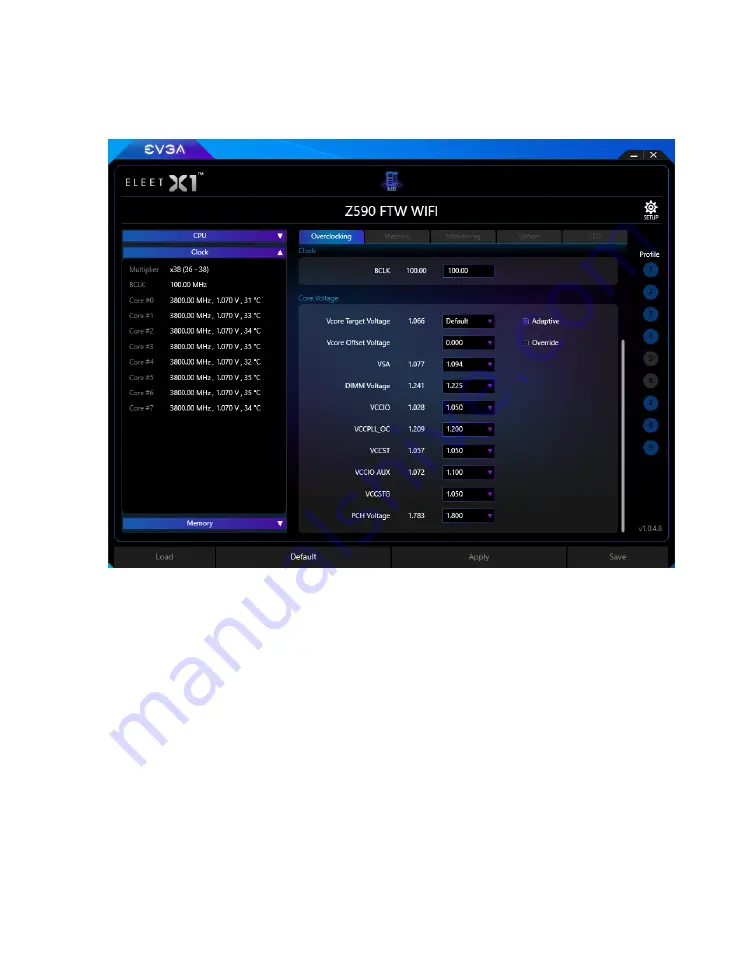
EVGA Z590 FTW WIFI (121-RL-E597)
- 132 -
As seen above, there are options for multiple voltages, and two options for your CPU
VCore: Adaptive and Override voltages. Adaptive allows for a tighter voltage profile to
keep voltage and heat to a minimum, while Override is more of a brute-force method of
setting your voltage. One primary advantage of using a stable Adaptive voltage is that it
allows your CPU to properly take advantage of C-States and energy saving features,
which can extend the lifespan of your CPU.
Adaptive requires you to set both a Target Voltage and an Offset Voltage. Start by
setting your Target Voltage, which represents the voltage necessary to run stable (or
close to it), even under load. One way to determine this is by stress-testing your CPU
with your desired overclock. Offset voltage can then be used to fine-tune additional
voltage that may be required under load or stress situations.
Override is simply a static voltage. Outside of extreme benching, this setting is typically
not needed or ideal for the longevity of the CPU, since voltages are meant to fluctuate
based on load. Alternatively, this can be used in the early stages of overclocking to find
your Target voltage, before switching back to Adaptive.















































